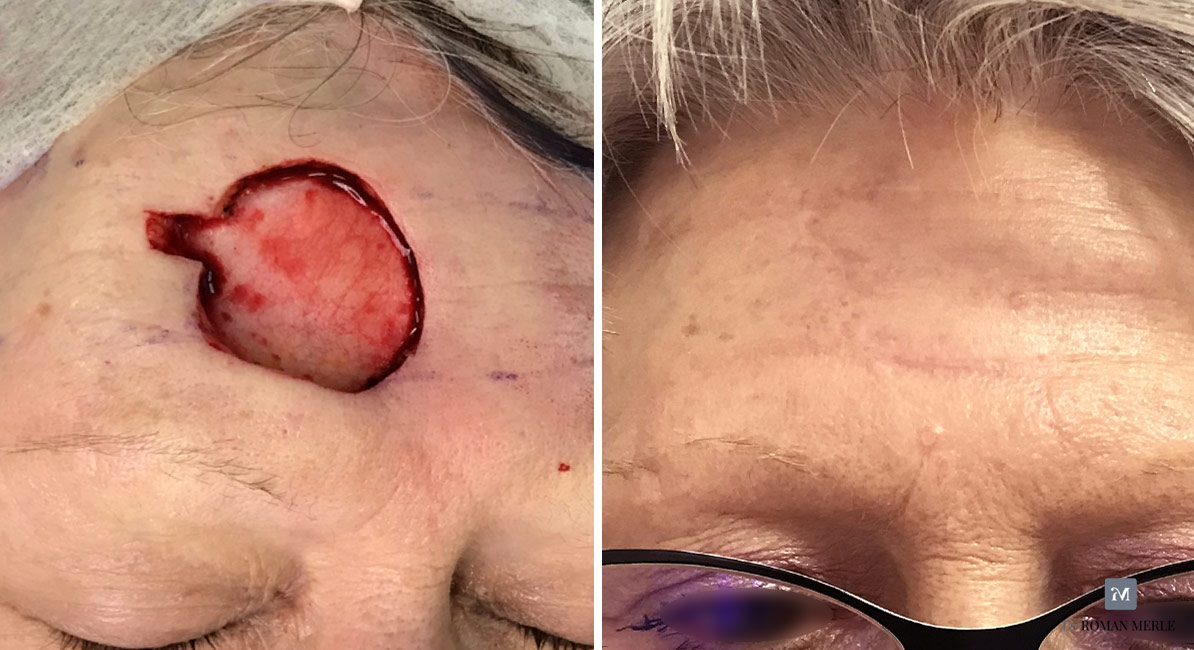Aesthetic and plastic surgeon Doctor Roman Merle performs soft tissue and skin lesion surgery in Antibes. If you have a lesion on your skin that needs to be removed for medical or aesthetic reasons, your doctor or dermatologist may recommend this type of surgery.
When might soft tissue or skin legion surgery be required ?
These lesions may appear as marks, extra skin growths, in varying sizes, shapes and colours. They can be present from birth or appear at any stage during the lifetime. Your dermatologist or doctor, who may then recommend surgery for their treatment, usually spots them.
Some examples of the most common lesions removed by Dr Merle:
– benign tumours – these are non-cancerous lesions. Some benign lesions can develop into cancer, so it is advisable to remove them as a preventative measure. Other benign lesions need to be removed because they are inconvenient or unsightly: they might rub, irritate or look unpleasant. There a different benign tumours:
– Melanin tumours: made up of the cells that produce skin pigmentation (melanin) : age spots (lentigos), moles (naevi).
– Tumours of the epidermis: seborrheic warts, actinic keratosis (small brown or red marks where the skin is exposed to the sun), tumours linked to viruses (warts, condyloma, molluscum contagiosum)
– Adnexal tumours – formed at the expense of hairs, sebaceous cysts, fatty granules, trichilemmal cysts or pillar cysts.
– Tumours of the connective tissue – formed from connective tissue, vessels, nerves, fat or muscle (fibroids, angiomas, lipomas, xathelasmas..)

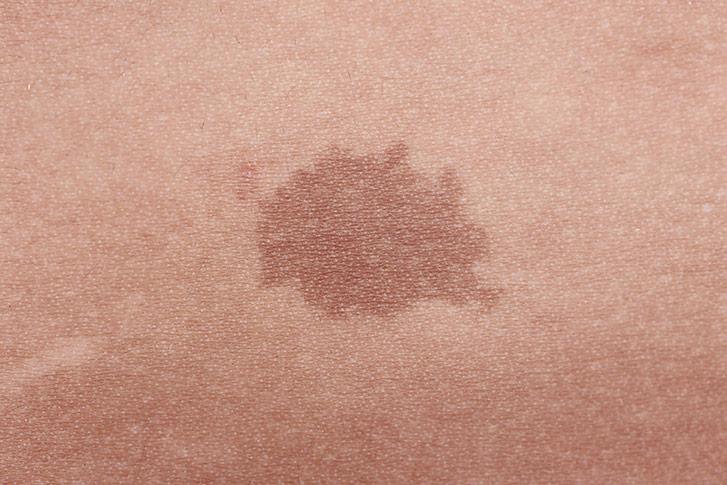
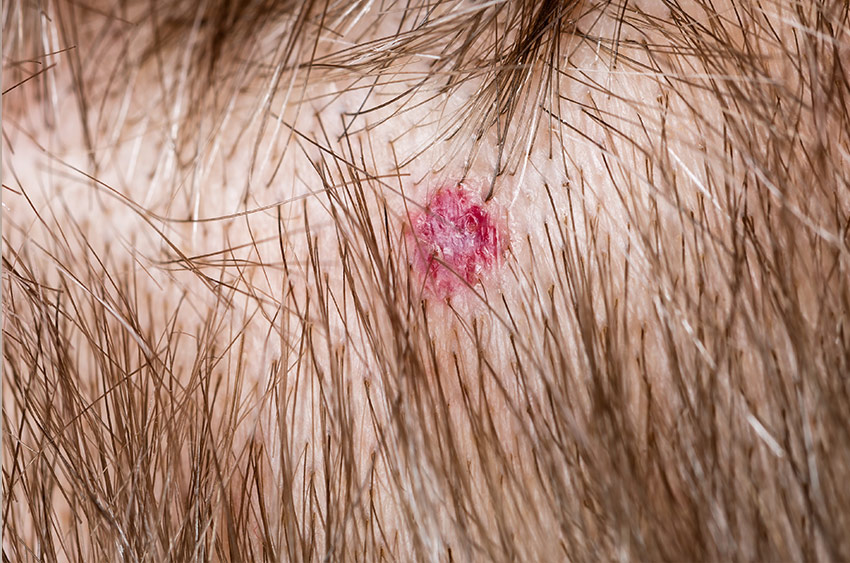
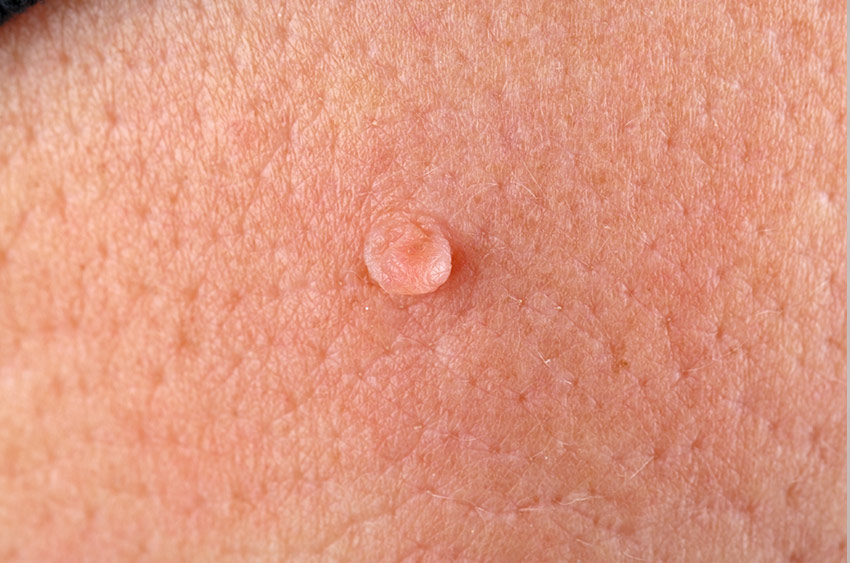
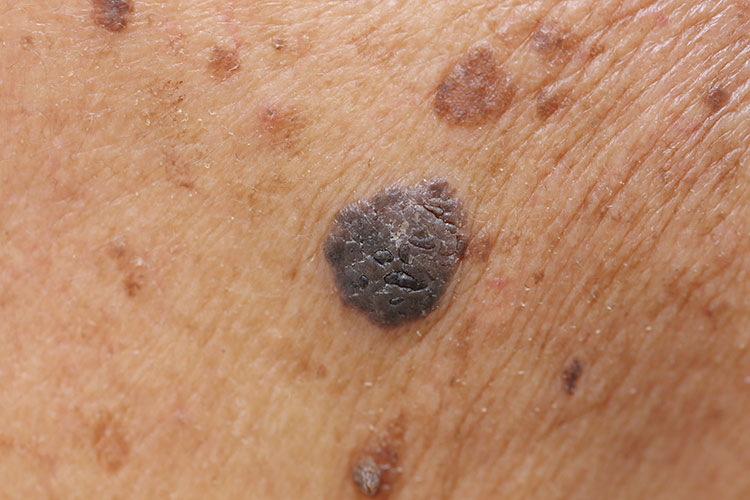
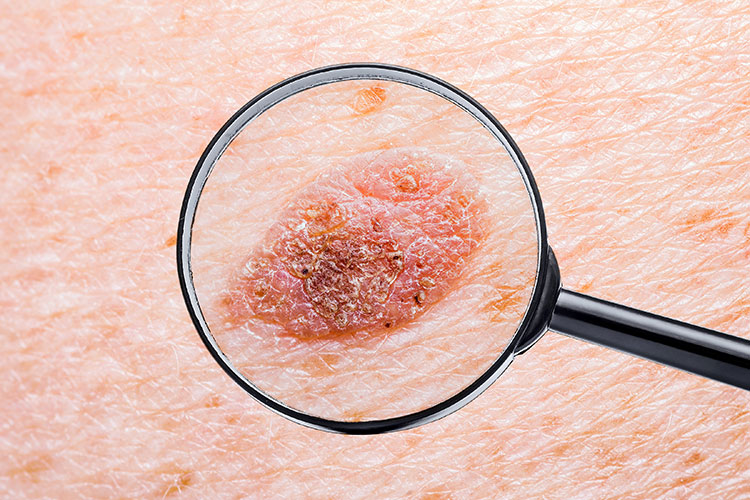
– Doubtful tumours – where it is uncertain if the tumour is actually benign or malignant. These need to be removed and examined under a microscope. This can sometimes be the case of melanin tumours where they are large and exist since birth or have been damaged, if they thicken, or if their colour or edges change.
– Malignant tumours: these are cancers of the skin. They must be removed – surgery is often the only option enabling a total recovery. There are a number of different skin cancers:
– Melanomas: melanoma is an uncommon cancer but one that is very aggressive if not caught early. Sun exposure or UV beds are principle factors that favour its appearance. It develops from melanocytes the cells that produce the skin’s pigmentation, melanin.
– Carcinomas: these are the most common forms of skin cancer. They usually occur after the age of 50. They can happen due to over exposure to the sun. A distinction is made between basal cell carcinomas and squamous cell carcinomas. In the majority of cases, carcinomas are curable. But squamous cell carcinomas can lead to secondary lesions if not removed in time.
Soft tissue or skin legion surgery
The removal of a skin tumour, large or small, is a surgical procedure that aims to completely remove the tumour with safety margins overlapping areas of healthy skin. Dr Merle will try to produce the most discreet scar as possible. An analysis of the removed lesion with a microscope is systematic, as this will confirm whether or not the tumour is benign. A local anaesthetic or local with sedation or general anaesthetic will be used.
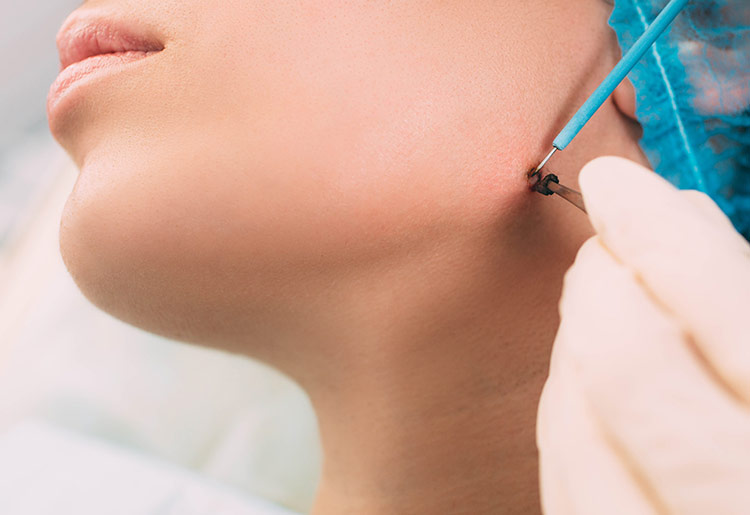

What to expect following soft tissue or skin legion surgery ?
Soit directement derrière la glande, en avant des muscles pectoraux
(positionnement prémusculaire)
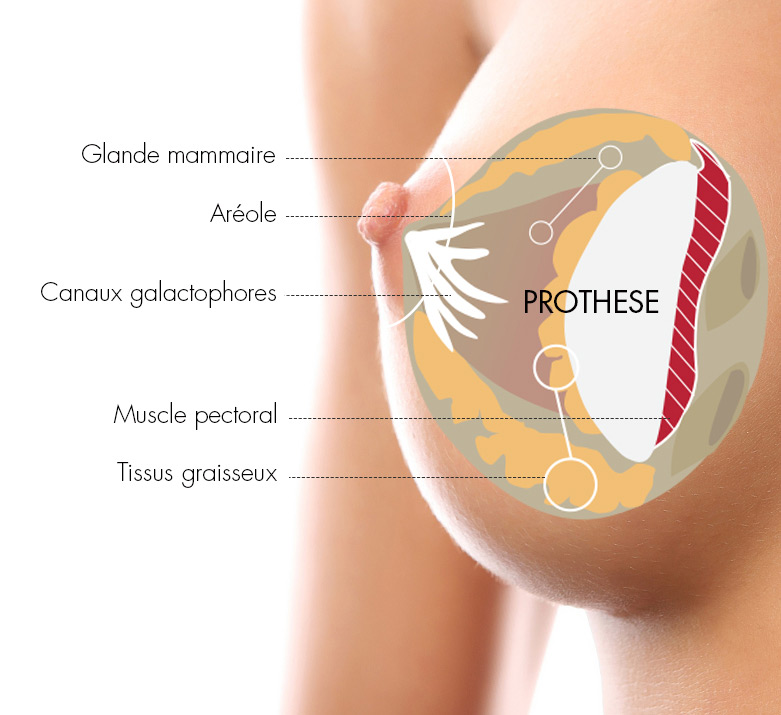
Soit plus profondément, en arrière des muscles pectoraux
(positionnement rétromusculaire)

After surgery you may feel light to moderate pulling or discomfort. Dr Merle will be able to prescribe appropriate medication to help. Some redness and swelling often occur but usually disappear after 48 hours. When the scar is quite deep, it is best to avoid sun exposure and to use a total block sunscreen.

